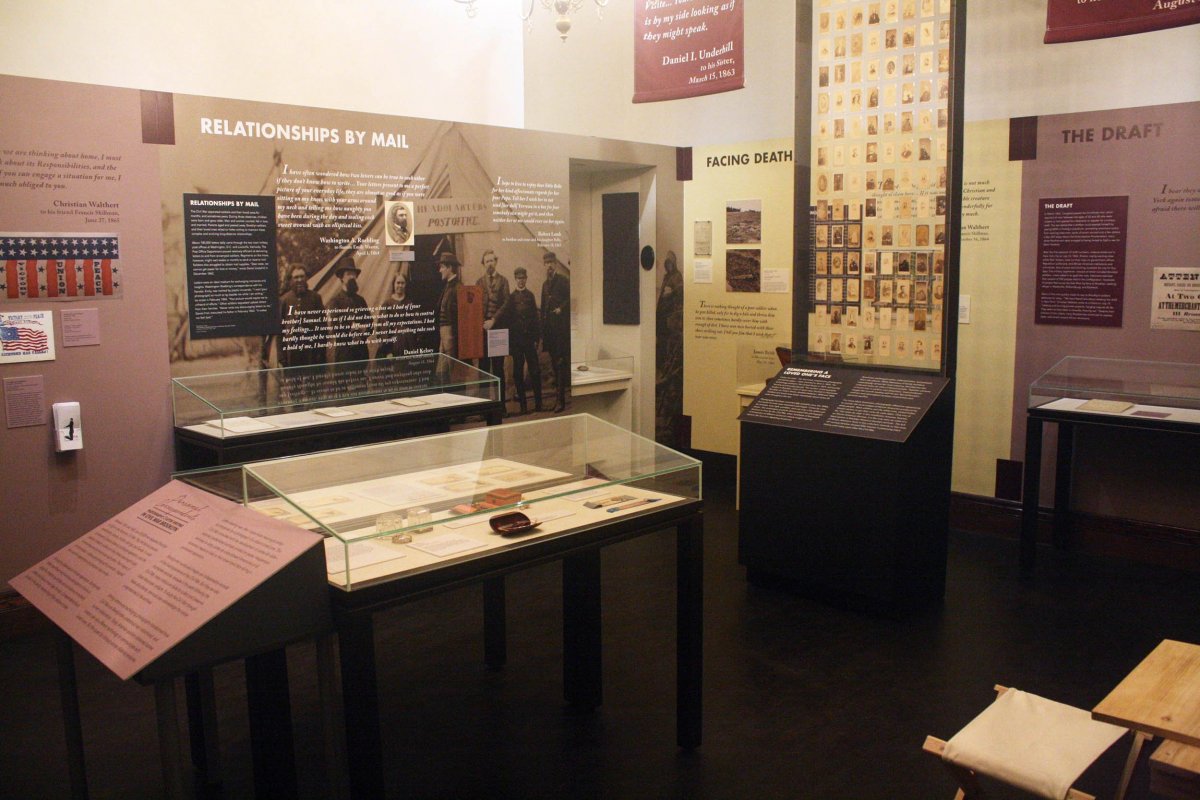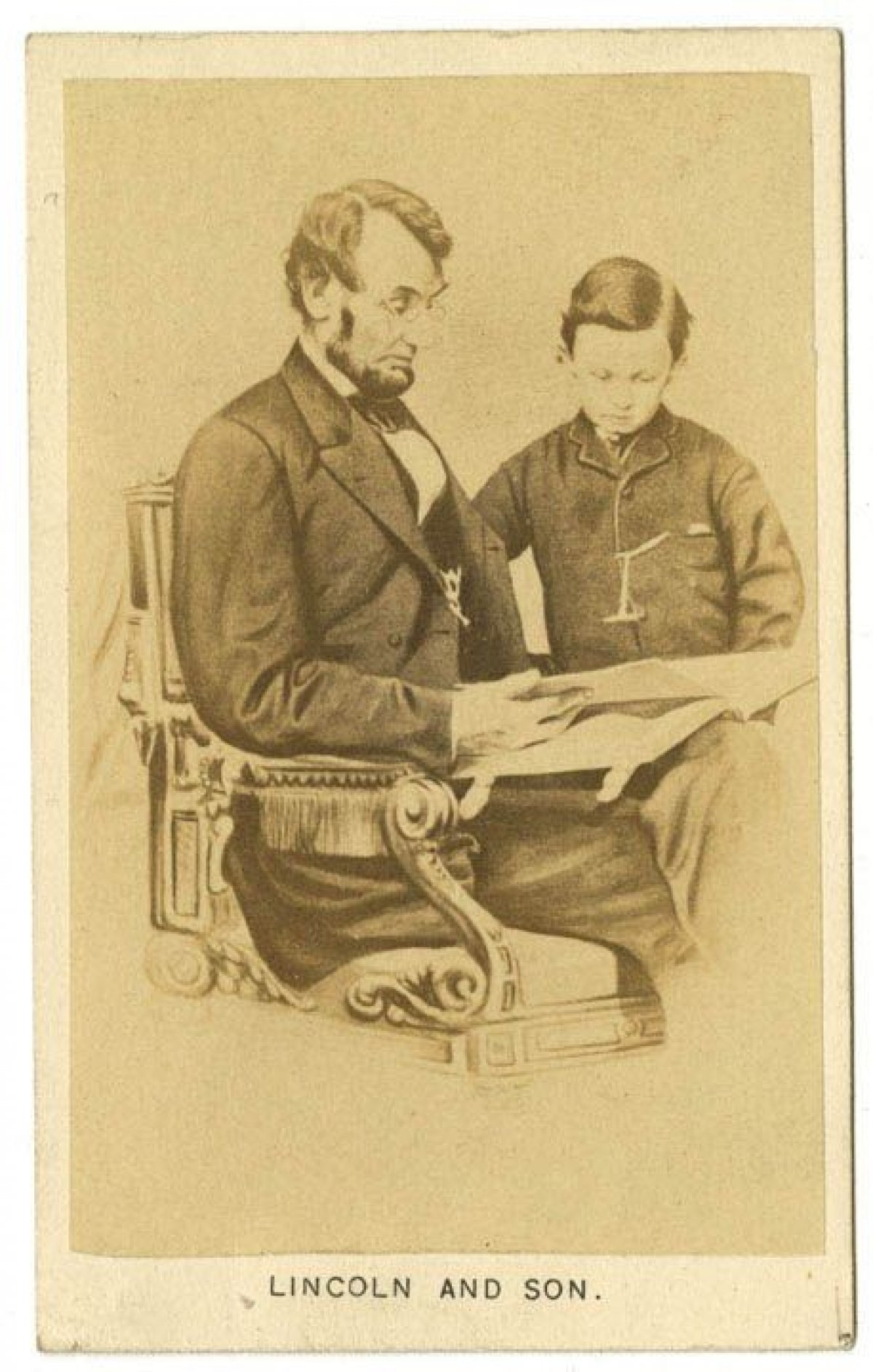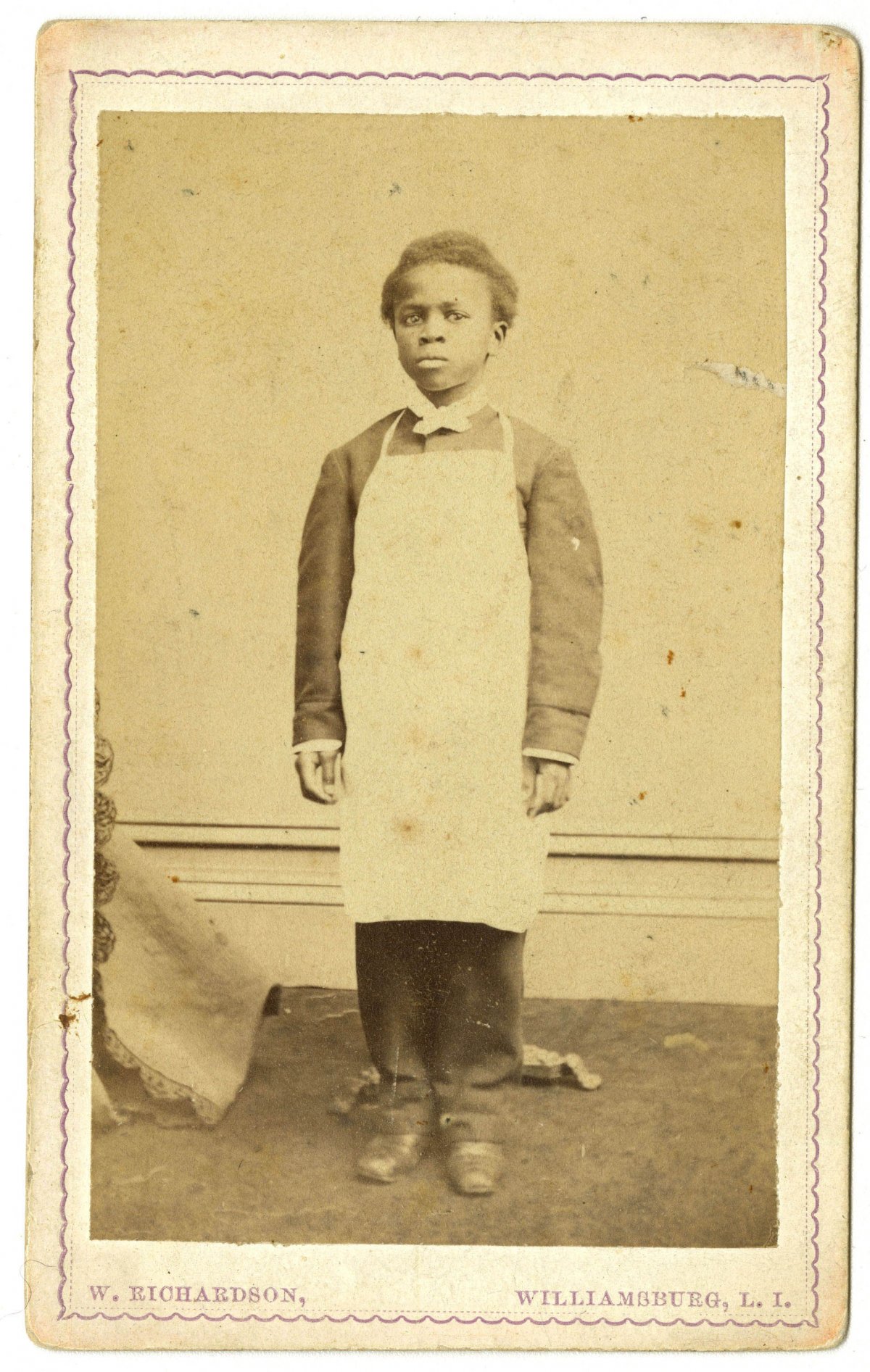
On April 9, 1865, 150 years ago today, Confederate General Robert E. Lee surrendered in Virginia to the Union's Commanding General, Ulysses S. Grant, marking the official end of the four-year American Civil War.
It was the war that "determined what kind of nation" the United States would be, historian James McPherson, Ph.D., wrote for the Civil War Trust. The all-consuming fight would eventually claim the lives of an estimated 620,000 to 750,000 men from combat wounds and disease.
For Edgar Dinsmore, an African-American soldier from Connecticut, the war was also a source of personal vindication. "The end is very near—I am convinced, and when Rebellion is crushed who will be more proud than I to say, 'I was one of the first of the despised race to leave the free North with rifle on my shoulder and give the lie to the old story that the black man will not fight.' And now that will [to] fight no one dare deny," Dinsmore wrote in a letter to his Brooklyn pen pal in February 1865.

The story of the American Civil War is often told in sweeping terms, but it is correspondence like Dinsmore's letters, currently on view in an exhibition at the Brooklyn Historical Society, that best illustrates the impact the fighting had on the everyday lives of Americans. "So much of the Civil War is told on these really epic terms," says Julie Golia, curator of "Personal Correspondents: Photography and Letter-Writing in Civil War Brooklyn" and BHS director of public history. "It was just as much about people keeping in touch at home and maintaining their relationships."
Housed on the third floor of the BHS building, which was constructed in 1881, the exhibition tells the story of the war in intimate terms. BHS, which is 152 this year, pulled from its archives of letters, artifacts and over 50,000 photographs to put together the exhibition, which opens April 9 and will be on display until spring 2016.

Public programs will accompany the exhibition, including talks by veterans of modern wars about their experiences fighting and coming home in an era in which letters have been replaced with instant messaging, and sepia-toned photos with Vines.
The letters on view at BHS depict life on the front lines in intimate detail—from the type of food soldiers ate, to their quarters, to the horrors they saw on the battlefield. "I have not taken my clothes off since I left Washington," Washington Roebling, the civil engineer who later built the Brooklyn Bridge, wrote to his sister.
"The combination of snores is peculiar, and must be heard to be appreciated," another soldier wrote.

Golia says the letters fascinated students, who viewed them earlier as part of an educational program run by the society, and were a natural fit for an exhibition exploring the reality of the war for the many Brooklynites who fought in it. "People respond to details in historical figures' lives that resonate with their own lives," she says.
More than 30,000 soldiers joined the war from Brooklyn, at the time the third largest city in America and not yet a borough of New York City. Brooklyn contributed substantially to the Union campaign with men, funds and munitions.
Union soldiers may have been fighting against the Confederacy, but that didn't mean they all supported giving black people more rights, including in New York state, the provider of the largest number troops to the war, according to the New-York Historical Society. Many "voiced great resentment" at the growing support for the emancipation of slaves, which culminated in the passing of the Emancipation Proclamation in January 1863, says Golia, freeing many slaves and allowing them to enlist.

In March 1863, a federal draft law passed by Congress required all men between 20 and 45 years old to enlist. A lottery for the draft in July sparked riots in New York City that targeted blacks, and hundreds of people were killed or injured. Many of the rioters were poor Irish workers, fearful about the possibility of black competition for jobs and enraged that conscription could be avoided with a $300 fee, more than they could ever afford.
Golia says BHS made a concerted effort not to "whitewash" any of the materials in the exhibition and wanted to acknowledge the endemic racism of that era. The exhibition includes audio recordings of letters by current U.S. armed forces veterans who are also trained actors. In one audio recording, letters by Brooklynite soldier Daniel Friel are read aloud by Ed Walsh, a former captain in the U.S. Marine Corps who was deployed in Iraq.
One recording is preceded with a warning of "offensive racist language." "If I had thought that I was coming out to fight for the nigger, I would have been the last one to come out, and plenty more besides me," wrote Friel to his parents from South Carolina in 1863.

The exhibition also had the challenge of representing "a silence," Golia says. Very few letters or artifacts exist from the estaimted 180,000 black soldiers who fought in the war. BHS had to go outside New York City to find letters written by some of those soldiers.
The letter by Dinsmore, on loan from Duke University's David M. Rubenstein Rare Book and Manuscript Library, was written to Carrie Drayton, a Brooklyn woman Dinsmore made contact with after placing an ad in the black newspaperAnglo-African for someone to correspond with. "I do feel very-very happy at the thought of returning home to mingle among the scenes of other and happier days," Dinsmore wrote to Drayton as the war drew to a close. No records exist of letters from Drayton, and it's not known if the two ever met.

"Newspapers or speeches are so important to understanding this time and the ideologies of this time, but there is a way in which they don't capture the true experience of everyday life during the Civil War," Golia says. "That's what we were really looking to bring to life."
Uncommon Knowledge
Newsweek is committed to challenging conventional wisdom and finding connections in the search for common ground.
Newsweek is committed to challenging conventional wisdom and finding connections in the search for common ground.
About the writer
Jackie Bischof is a Queens resident, by way of Johannesburg, who has written and produced for a wire, magazine, websites ... Read more
To read how Newsweek uses AI as a newsroom tool, Click here.






